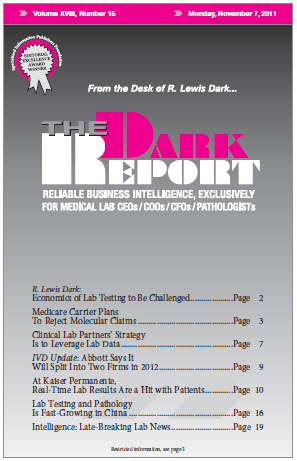CEO SUMMARY: In September, Palmetto, a Medicare carrier serving California and seven other states, made public two draft local coverage determinations (LCDs) that revamp its coverage guidelines for molecular diagnostic tests (MDT) and laboratory-developed tests (LDT). All labs submitting claims to Palmetto would need to apply to Palmetto for each MDT or LDT it plans …
Medicare Carrier Plans to Reject Molecular Claims Read More »
To access this post, you must purchase The Dark Report.


